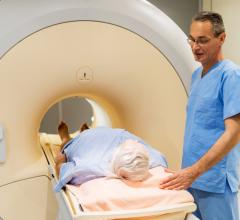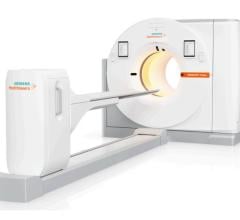
April 15, 2009 - Researchers at UCLA’s Jonsson Comprehensive Cancer Center have shown that they can determine after a single cycle of chemotherapy whether the drugs are killing the cancer or not using a PET/CT scanner.
During a recent study, researchers monitored 50 patients undergoing treatment for high-grade soft tissue sarcomas. The patients were receiving neoadjuvant chemotherapy treatments to shrink their tumors prior to surgery. The study found that response could be determined about a week after the first dose of chemotherapy drugs. Typically, patients are scanned at about three months into chemotherapy to determine whether the treatment is working.
“The question was, how early could we pick up a response? We wanted to see if we could determine response after a single administration of chemotherapy,” said Fritz Eilber, M.D., an assistant professor of surgical oncology, director of the Sarcoma Program at UCLA’s Jonsson Cancer Center and senior author of the study. “There’s no point in giving a patient a treatment that isn’t working. These treatments make patients very sick and have long-term serious side effects. ”
The study appears in the April 15 issue of the journal Clinical Cancer Research.
PET scanning shows biochemical functions in real time, acting as a sort of molecular camera. For this study, Eilber and his team monitored the tumor’s metabolic function, or how much sugar was being consumed by the cancer cells. Because they’re growing out of control, cancer cells use much more sugar than do normal cells, making them light up under PET scanning using a glucose uptake probe called FDG. In order to identify an effective response to treatment, researchers needed to see a 35 percent decrease in the tumor’s metabolic activity.
Of the 50 patients in the study, 28 did not respond and Eilber and his team knew within a week of their initial treatment. This allows the treatment course to be discontinued or changed to another more effective treatment, getting the patient to surgery more quickly.
“The significance of this study was that it identified people – more than half of those in the study – who were not going to benefit from the treatment early in the course of their therapy,” Dr. Eilber said. “This information significantly helps guide patient care. Although this study was performed in patients scheduled for surgery, I think these findings will have an even greater impact on patients with inoperable tumors or metastatic disease as you get a much quicker evaluation of treatment effectiveness and can make decisions that will hugely impact quality of life.”
Dr. Eilber said he was surprised how soon response to therapy could be determined.
“We had an idea that patients either respond or do not respond to treatment, but we weren’t sure how early you could see that,” he said. “I really was not sure we would be able to see effectiveness this early.”
Dr. Eilber and his team will continue to follow the patients and a clinical trial currently is underway based on the results of this study. He believes it will help personalize treatment for each patient and may one day become the standard of care.
Researchers also may use the non-invasive imaging method to gauge response to novel and targeted therapies. Dr. Eilber said that they are clinically testing new tracers as well. Instead of measuring glucose uptake, these probes look at cell growth. Response to therapy also may be tested using PET in other cancer types, he said.
The nearly two-year study represented a true multidisciplinary effort, Eilber said. Experts from surgery, medical oncology, molecular and medical pharmacology, radiology, pathology, orthopedics, nuclear medicine and biostatistics comprised the research team. The study was funded by grants from the UCLA In Vivo Cellular and Molecular Imaging Centers and the Department of Energy.
For more information: www.cancer.ucla.edu


 October 30, 2025
October 30, 2025 









